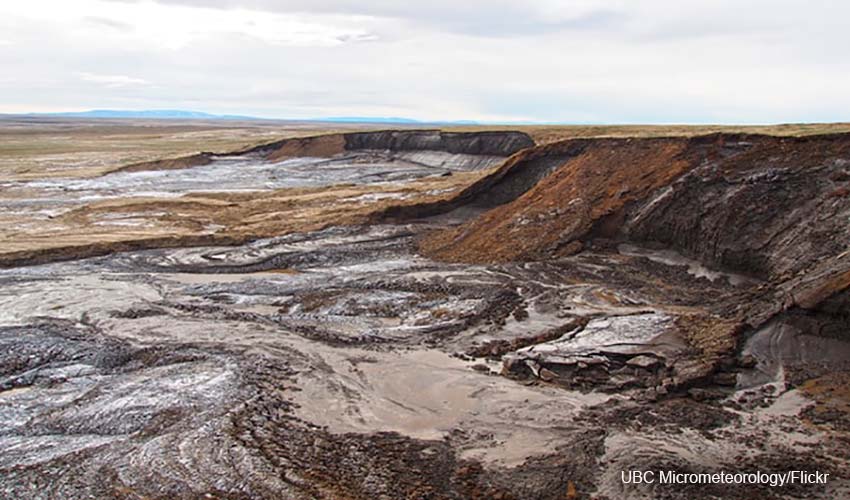FAQs about Permafrost

1. What is permafrost and where is it located?
Permafrost is the soil and subsoil frozen for at least two continuous years, free of ice or snow most of the time. A permafrost soil, due to the poverty of its nutrients, is a kind of frozen desert that has a vegetation of little diversity. Permafrost thickness varies from a few meters to several hundred meters deep, depending on the climate of the place. It is calculated that in the northern hemisphere, permafrost has an area of 23 million km2 (Spain would fit 45 times in this territory).
The word permafrost was coined in 1943 by S. W. Muller. It comes from the words “permanent” and “frost”, that is, permanently frozen.
Permafrost soils are cold deserts, with very low humidity and rainfall, that occupy huge territories, such as the tundra, one of the coldest biomes on the planet, which has been described as a treeless plain. In the taiga, the soil can freeze during winter, but the summer months are warm enough for the surface to thaw, although the deeper parts remain frozen. Permafrost is found mainly in Alaska, Canada, and Russia, but also in the Nordic countries and the Himalayas.
Permafrost is one of the largest deposits of organic carbon on the planet. It is estimated that under its soils there could be twice as much carbon as exists in the atmosphere. With increasing global warming, there is a risk that the permafrost layer will thaw and consequently the carbon will be transformed into carbon dioxide by microbial action and escape to the atmosphere.
FAQS about Permafrost
1. What is permafrost and where is it located?
2. Are there frozen soils without ice?
3. What is the function of permafrost?
4. What dangers does permafrost pose?
5. Is Siberian permafrost thawing faster?
6. Is Russia the most vulnerable country due to permafrost?
7. What are the bacteria related to permafrost?
8. Can bacteria hibernating for millions of years in permafrost be activated?
9. Is there permafrost in the southern hemisphere?
10. What is the difference between the tundra and the taiga?
Other secctions of Permafrost
Article
Magazine
You can also see it in…
Infographics

Photo Gallery.

Video Gallery

